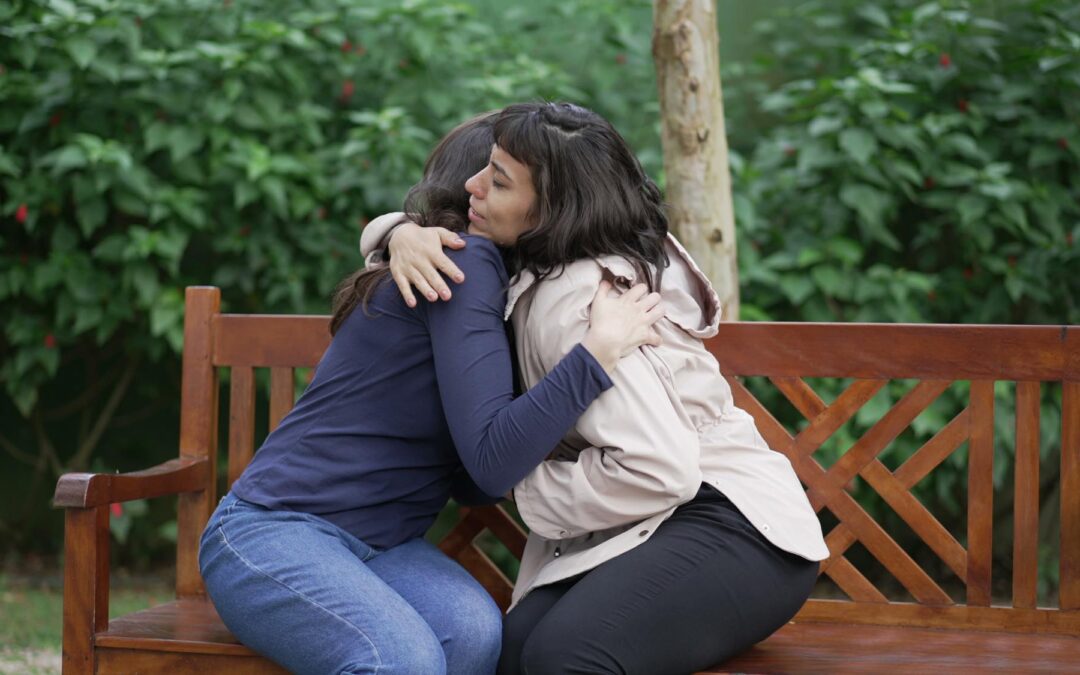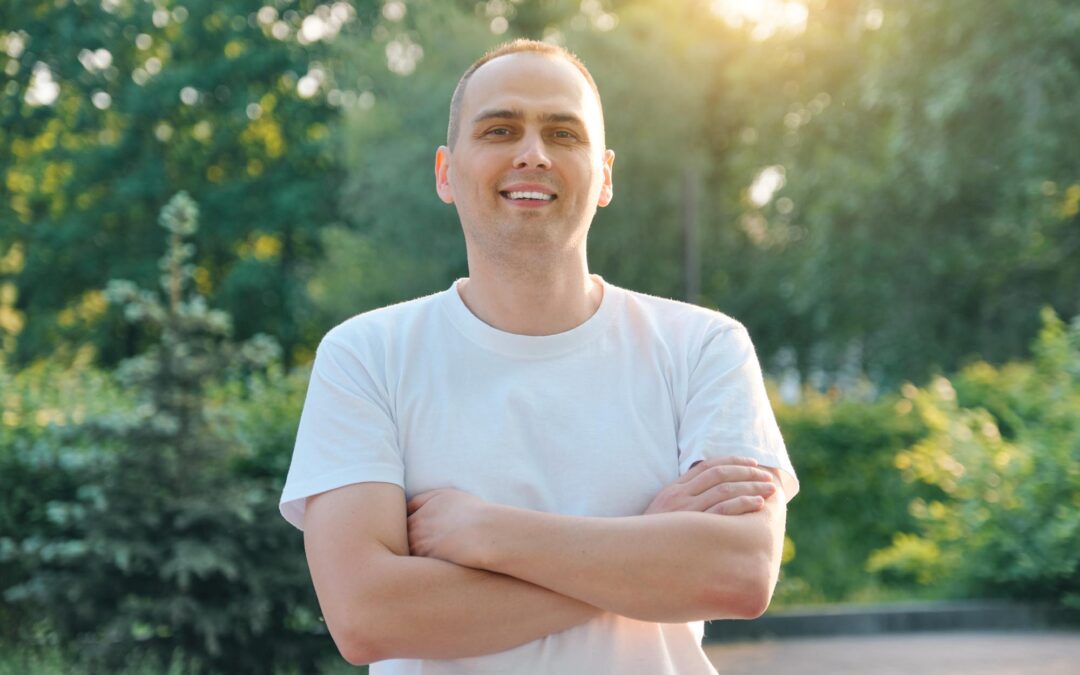A Family’s Guide: How to Support a Loved One with Dual Diagnosis
Understanding Dual Diagnosis
Dual diagnosis—also called co-occurring disorders—describes the simultaneous presence of a mental health disorder and a substance use disorder in the same person. When someone experiences both conditions at once, each can intensify the other, creating a complex cycle that affects thoughts, emotions, behaviors, and physical health.
These co-occurring conditions manifest differently in each individual. Someone might struggle with depression while using alcohol to numb emotional pain, or experience anxiety that worsens through stimulant use. The relationship between the two conditions can be deeply intertwined, making it difficult to determine which came first or where one ends and the other begins.
Factors Contributing to Dual Diagnosis
Several factors contribute to the development of dual diagnosis:
- Trauma: Past experiences of abuse, neglect, or significant loss can trigger both mental health symptoms and substance use as a coping mechanism. This is often seen in cases of PTSD and addiction, where individuals may turn to substances to cope with their trauma.
- Chronic stress: Ongoing life pressures may lead to anxiety or depression, with substances initially used for temporary relief.
- Genetics: Family history increases vulnerability to both mental health conditions and addiction
- Brain chemistry imbalances: Neurotransmitter disruptions can predispose individuals to both types of disorders
The Need for Specialized Treatment
The interconnected nature of dual diagnosis demands specialized treatment approaches. Standard addiction treatment alone rarely addresses underlying mental health needs, while mental health care without addiction support leaves a critical gap. Integrated treatment that simultaneously addresses both conditions offers the most effective path toward lasting recovery and wellness.
For instance, when dealing with bipolar disorder and substance abuse, it’s essential to have a treatment plan that caters to both issues concurrently. Similarly, individuals suffering from long-term alcoholism may find success through hypnosis as part of their recovery journey. Such comprehensive strategies are at the heart of effective dual diagnosis treatment programs like those offered at CNV Detox in California.
The Role of Family Support in Dual Diagnosis Treatment
Family support is one of the most powerful forces for lasting recovery in dual diagnosis treatment. When someone struggles with both a mental health condition and substance use disorder, having caring family members around provides a foundation of emotional stability that clinical treatment alone cannot replicate. This support helps individuals feel less alone during their most vulnerable moments, reminding them they have people who believe in their ability to heal.
How Family Support Influences Recovery
The home environment has a profound impact on recovery outcomes. Families who actively participate in their loved one’s treatment journey create spaces where sobriety feels achievable rather than overwhelming. This means:
- Establishing routines that minimize triggers
- Celebrating small victories without judgment
- Maintaining consistent communication that reinforces hope
The Role of Family in Preventing Relapse
A strong sober support network goes beyond the treatment facility walls. Family members play a crucial role in:
- Recognizing early warning signs of relapse
- Understanding medication needs
- Assisting their loved one in facing practical challenges as they rebuild their life
The emotional bond between family and individual creates accountability based on love instead of shame.
Building a Supportive Environment
Creating this supportive atmosphere requires intention and commitment from families. They must learn to:
- Balance compassion with healthy expectations
- Offer encouragement while respecting professional treatment recommendations
When family members show genuine care through their actions—such as attending therapy sessions, educating themselves about dual diagnosis, and adjusting household dynamics—they send a powerful message: You are worth the effort, and we’re in this together.

Educating Yourself About Dual Diagnosis Symptoms and Treatment Options
When asking yourself, “My Loved One Has a Dual Diagnosis: How Can I Help?” the first step involves understanding what you’re observing. Mental illness education empowers you to recognize the complex interplay between substance use and psychological struggles.
Recognizing the symptoms
Mental health indicators may include:
- Persistent sadness, anxiety, or mood swings that seem disconnected from life circumstances
- Social withdrawal or dramatic changes in relationships
- Difficulty concentrating, sleeping, or maintaining daily routines
- Expressions of hopelessness or thoughts of self-harm
These symptoms could be indicative of various mental health disorders. For instance, understanding PTSD symptoms and their impact on addiction can provide valuable insights if your loved one has experienced trauma. Similarly, recognizing the signs of OCD and its link to addiction can help in identifying specific challenges they may face.
Substance use disorder signs often manifest as:
- Increased tolerance or needing more of a substance to achieve the same effect
- Failed attempts to cut back or quit
- Neglecting responsibilities at work, school, or home
- Continued use despite negative consequences
The symptoms often mask or exacerbate each other, making accurate identification challenging without professional assessment.
Exploring treatment options
Treatment options for dual diagnosis differ significantly from single-condition approaches. Evidence-based care requires integrated therapy modalities that address both conditions simultaneously rather than sequentially. This means your loved one benefits most from programs where mental health professionals and addiction specialists collaborate within the same treatment framework.
Cognitive-behavioral therapy, dialectical behavior therapy, and medication-assisted treatment often form the foundation of comprehensive dual diagnosis care. It’s also crucial to consider codependency’s impact on relationships and addiction risks when looking at treatment options. Each care plan should be customized to address the unique relationship between your loved one’s specific mental health condition and substance use patterns.
Encouraging Professional Help: Detoxification, Rehab, Counseling, and Behavioral Therapy
Recognizing when your loved one needs professional help is a crucial moment in their recovery journey. Here’s how different forms of treatment can support them:
1. Medically Supervised Detoxification
Detoxification is the first step in the recovery process. It involves removing the substance from the person’s system and managing withdrawal symptoms. Medically supervised detoxification ensures that this process is safe and comfortable.
- Healthcare professionals monitor withdrawal symptoms closely.
- Appropriate medications are given to manage physical discomfort.
- This is especially important for individuals with dual diagnosis (co-occurring mental health conditions).
Attempting detox without medical supervision can lead to dangerous complications or worsen existing mental health issues.
2. Comprehensive Residential Rehab Programs
After detox, individuals often require additional support to maintain their recovery. Comprehensive residential rehab programs provide this support.
- These programs offer structured care and therapy in a controlled environment.
- They create distance from triggering situations or people that may lead to relapse.
- 24/7 care ensures that both substance use patterns and mental health symptoms are addressed simultaneously.
In a residential setting, treatment teams can observe how different conditions interact and make necessary adjustments to the care plan.
3. Counseling Interventions: Cognitive-Behavioral Therapy (CBT)
Counseling plays a vital role in treating dual diagnosis. One of the most effective approaches is cognitive-behavioral therapy (CBT).
- CBT helps individuals identify thought patterns that contribute to both substance use and mental health struggles.
- It teaches them healthier ways of coping with stress, anxiety, or depression.
- Through this process, your loved one learns to recognize triggers and challenge distorted thinking.
Building these skills is essential for long-term wellness.
4. Behavioral Therapy for Practical Changes
In addition to traditional talk therapy methods like CBT, behavioral therapy focuses on making practical changes in daily life.
- Evidence-based strategies are used to reshape habits and responses.
- This approach recognizes that simply talking about problems may not be enough for some individuals.
- Instead, it emphasizes taking action and implementing new behaviors.
By combining different therapeutic techniques, such as CBT and behavioral therapy, multiple pathways toward healing are created.
5. Specialized Treatment Solutions for Psychotic Disorders
For individuals who also experience psychotic disorders alongside addiction, specialized treatment options are available.
These solutions address the unique challenges posed by both conditions:
- Integrated Care: Treatment plans that simultaneously target psychosis and addiction issues.
- Medication Management: Antipsychotic medications used alongside substance abuse interventions.
- Individualized Approaches: Tailoring therapies based on specific needs arising from co-occurring disorders.
6. Support from Alcoholics Anonymous (AA)
The principles and steps outlined in programs like Alcoholics Anonymous can also provide significant support during recovery.
- AA offers a structured path towards healing and sobriety through its 12-step program.
- It emphasizes personal accountability, peer support, and spiritual growth as key components of recovery.
Encouraging your loved one to participate in AA meetings or engage with its resources can complement their professional treatment efforts.
Participating in Family Therapy: Enhancing Communication Skills and Setting Healthy Boundaries
Family therapy creates a structured space where everyone can learn to navigate the complexities of dual diagnosis together. These sessions help family members understand how their words, actions, and reactions influence their loved one’s recovery while also addressing their own emotional needs. Through guided conversations with trained therapists, families develop communication skills that replace patterns of blame, criticism, or avoidance with honest, compassionate dialogue.
The therapeutic environment allows families to practice expressing concerns without judgment and listening without defensiveness. This shift in communication style helps reduce the tension and misunderstandings that often accompany dual diagnosis situations. Family members learn to recognize when they’re speaking from fear versus support, and how to articulate their needs clearly while respecting their loved one’s autonomy.
Establishing healthy boundaries becomes equally essential during this process. These boundaries protect both the individual in recovery and their family members from patterns that hinder healing:
- Refusing to provide money that could enable substance use
- Maintaining consistent expectations around treatment participation
- Allowing natural consequences rather than rescuing from self-created problems
- Protecting personal time and emotional energy through self-care
Boundaries aren’t walls built from anger—they’re frameworks built from love that define where your responsibility ends and your loved one’s begins. Family therapy teaches how to hold these boundaries with compassion while maintaining connection, creating accountability structures that support lasting recovery rather than temporary fixes.
Supporting Lifestyle Changes: Embracing Holistic Recovery Approaches
Recovery from dual diagnosis extends beyond clinical treatment—it encompasses whole-person wellness. As a family member, you can actively encourage lifestyle changes that strengthen your loved one’s foundation for lasting recovery.
Holistic practices work alongside professional treatment:
- Meditation and mindfulness: help regulate emotions and reduce cravings. Even five minutes of guided breathing exercises can provide tools for managing anxiety or intrusive thoughts that might otherwise trigger substance use.
- Regular exercise: releases natural mood-boosting endorphins while providing structure to each day. Walking together, joining a yoga class, or swimming offers both physical benefits and quality connection time.
- Nutritious eating: repairs the body after substance use and stabilizes mood. Preparing balanced meals together demonstrates care while rebuilding healthy routines.
Peer support groups create community for both your loved one and your family. Organizations like NAMI (National Alliance on Mental Illness) offer family education programs, while your loved one can connect with others navigating similar challenges.
Your own self-care isn’t selfish—it’s essential. Caregiver burnout serves no one. Seek your own therapist, attend support groups for families, and maintain activities that replenish your energy. When you model healthy coping strategies, you demonstrate what sustainable recovery looks like.
CNV Detox connects families with community resources throughout Los Angeles, recognizing that recovery thrives within a supportive ecosystem that honors both clinical excellence and compassionate, holistic care.





